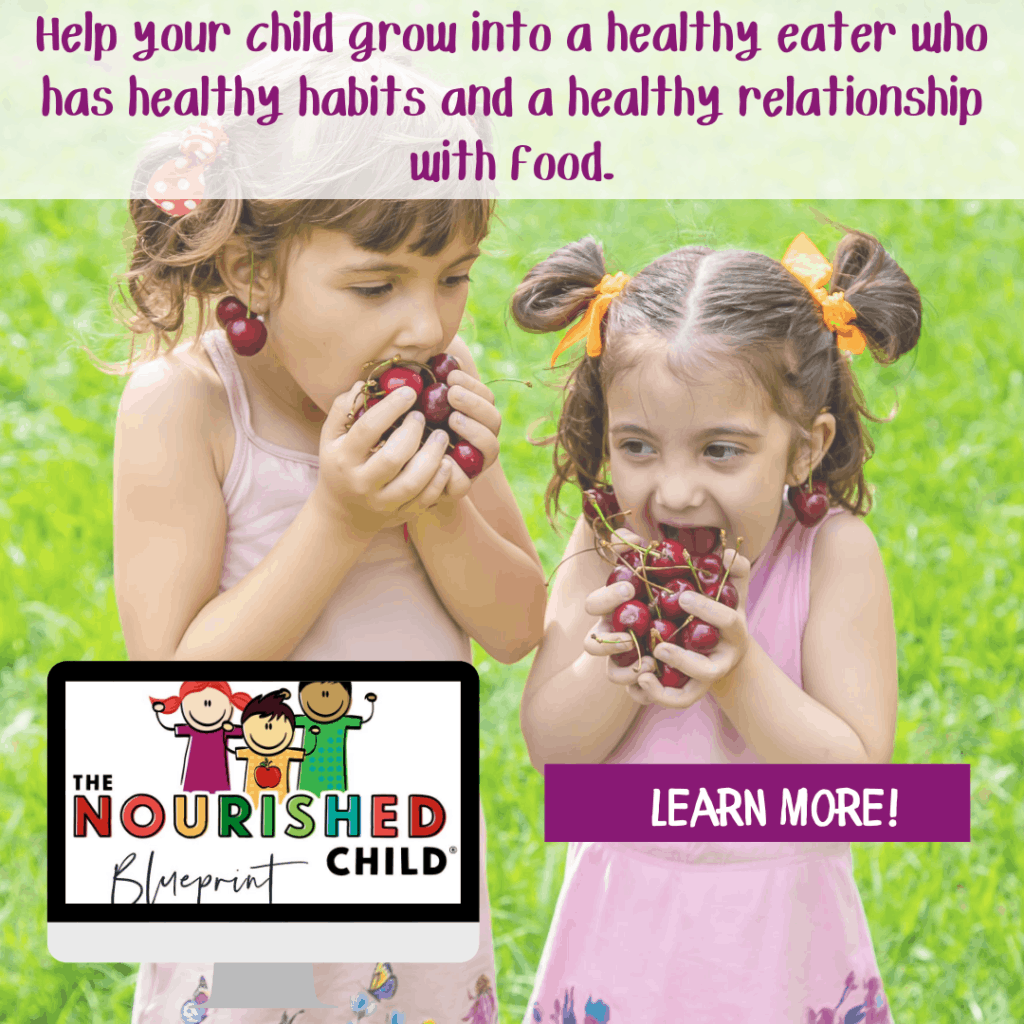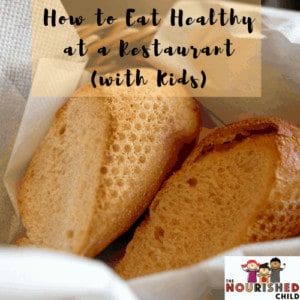11 Natural Stool Softener Foods for Kids with Constipation
October 22, 2023
Check out these stool softener foods for kids and help prevent or treat constipation.
Lots of kids are constipated. In fact, it’s reported that about 3-5% of pediatrician office visits are for constipation and about a third of the visits to the gastroenterologist are for complaints related to being constipated.
So, many kids suffer from chronic constipation. As a result, many parents are looking for solutions. A stool softener for kids can help, but often, parents are led to an over-the-counter medication to help their children.
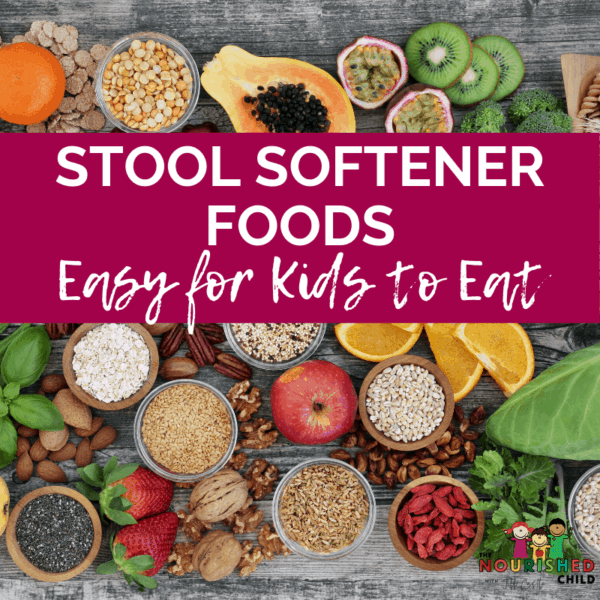
Miralax: A Common Children’s Stool Softener
As a pediatric dietitian, I’ve seen many kids with constipation using Miralax to help them move their bowels regularly. Miralax, or polyethlylene glycol 3350, is a stimulant laxative. It brings more water into the intestines, triggering a bowel movement.
Many parents I meet with, however, are anxious to use a more natural approach to constipation management and avoid or eliminate over-the-counter medications like Miralax.
While I am not opposed to the use of laxatives or other medications to relieve constipation, I believe we should make an attempt to improve children’s diets and other lifestyle behaviors first. This is where stool softener foods can help.
But before we dive into stool softener foods, you need to understand a few things about constipated kids.
Why Do Kids Get Constipated?
Kids get constipated for many reasons. From my perspective, a low-fiber diet or not getting enough grams of fiber in the diet, not getting enough water, and lack of regular exercise each play a large role in this scenario.
But there are other reasons for constipation, such as Hirschprung’s disease, a condition where the nerve cells at the end of the bowel are missing, causing blockage because the stool doesn’t pass normally.
Irritable bowel syndrome, constipation type (IBS-C) is another medical condition whereby certain foods –some of which could be high fiber foods – cause constipation.
[Listen to Kate Scarlata discuss IBS with me on the podcast and read this article I wrote for U.S. News & World Report on constipation.]
Last, abdominal pain and the fear of pooping are drivers for some kids. Toddlers may not want to defecate because hard stools are painful. Older kids may not feel comfortable going number #2 at school and not having regular bowel movements contributes to a greater risk of constipation.
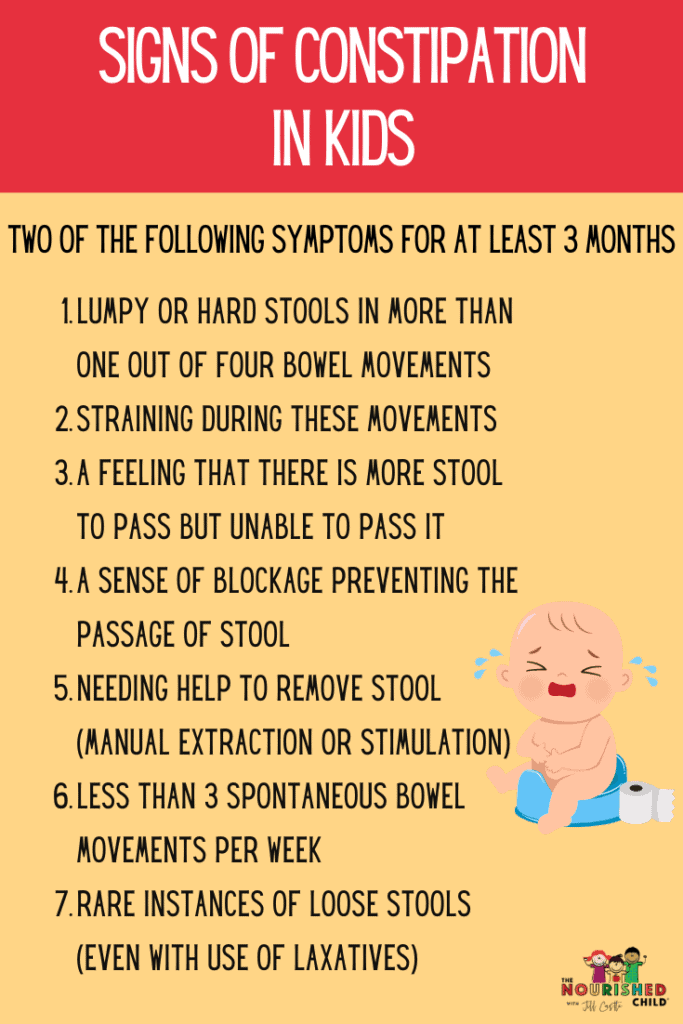
How Do Over-the-Counter Stool Softeners Work?
Generally, these work by pulling liquids into the digestive tract, which is absorbed into the stool, making it wetter and easier to pass.
Stool softeners are emollient laxatives. An example is Colace. It’s important to note that a stool softener is just one type of laxative. There are several different types of laxatives that may help relieve constipation.
Understanding Laxatives
Some laxatives work on the gut and some work on the stool itself.
Let’s take a quick review.
Bulk-forming Laxatives
These form a gel-like substance in the GI tract, which will hold more water in the stool. The stool gets larger, which stimulates the gut to contract and pass the stool.
Bulk Forming Laxative Examples: Metamucil, Citrucel, Benefiber
Lubricant Laxatives
These coat the stool with an oil (ie, mineral oil), preventing water loss. It also helps the stool pass through the gut easier.
Example: Mineral oil
Hyperosmotic Laxatives
These also draw more water into the gut and allow stool to pass more readily.
Hyperosmotic Laxative Examples: Colace, Miralax
Saline Laxatives
Similar to the functioning of other laxatives described above, saline laxatives pull water into the gut and soften the stool. This type of laxative can cause dehydration and electrolyte imbalances.
Saline Laxative Examples: Fleet, Milk of Magnesia
Stimulant Laxatives
This stimulates contractions and movement in the gut. These are fast-acting but like saline laxatives, they can cause dehydration and electrolyte imbalances.
Stimulant Laxative Examples: Ex-Lax, Senokot, Dulcolax
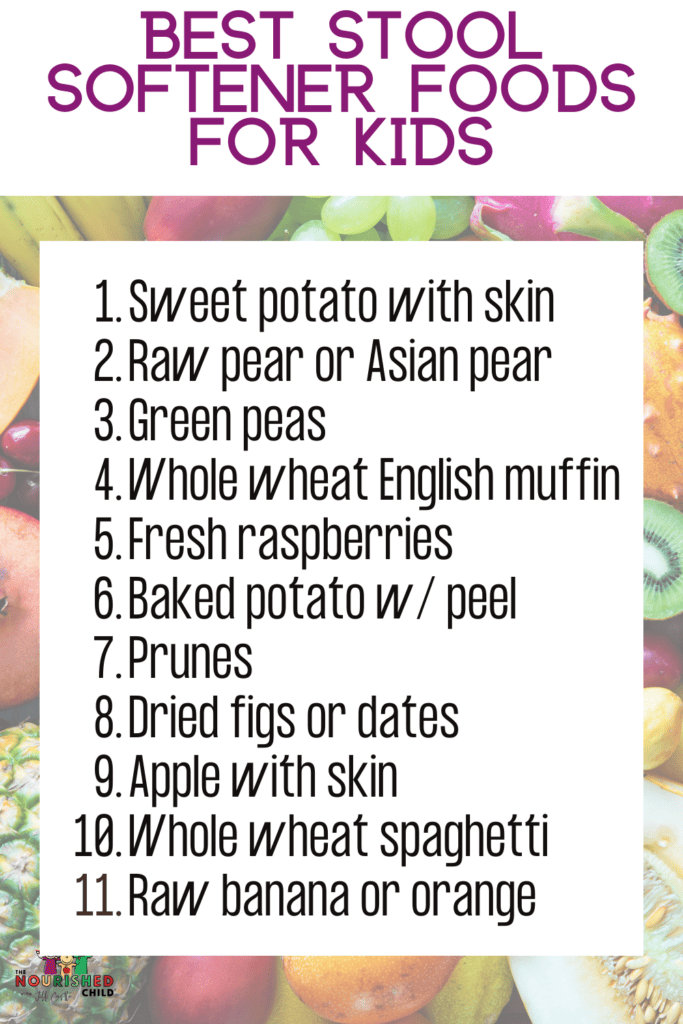
Is Miralax Safe for Kids?
Miralax has been studied and considered safe in children under 17 years of age, however, a comprehensive study is underway to determine side effects of chronic Miralax use, particularly with regard to neuro-psychiatric symptoms such as depression, anxiety, anger, and paranoia.
Outcomes of this study are pending.
**Never use a laxative or over-the-counter stool softener without consulting with your doctor first.**
Can Foods Be a Natural Laxative for Kids and Toddlers?
Yes! Foods and the overall diet can help soften the stool and stimulate a bowel movement. The trick is to get on a regular meal pattern that incorporates more of these foods.
Foods with fiber are considered good softeners. Striving for a high-fiber diet is critical to breaking the constipation cycle and helping your child normalize his bowel movements.
Types of Fiber: Insoluble versus Soluble Fiber
When it comes to foods that prevent constipation, you’ll want to focus on foods with insoluble fiber. Insoluble fibers cannot dissolve in water and they stay intact as they move through your child’s intestine. An example of this are chia seeds.
It stays undigested because our body can’t digest insoluble fiber. In other words, our bodies can’t break it down. It sits in the intestinal tract and absorbs fluids, making stool easier to pass.
Soluble fibers are the opposite of insoluble fibers, in that they DO dissolve in water easily, changing into a gel-like substance in the colon. This gel substance can block fat absorption, lower cholesterol, keep blood sugar stable, and feed healthy gut bacteria.
Both insoluble and soluble sources of fiber are important to a healthy gut and normal bowel movements.
Soluble vs Insoluble Fiber Foods for Kids Chart
| Soluble Fiber Foods | *** | Insoluble Fiber Foods |
| Beans | Beans | |
| Peas | Whole Wheat Breads & Products | |
| Oats | Bran Cereal & Bran Products | |
| Barley | Green Beans | |
| Apples | Nuts | |
| Citrus Fruit | Potato |
11 Foods that Naturally Soften Stool
Here are 11 foods to soften stool that you can begin to work into your child’s diet regularly. Aim for two to three of these foods per day. And remember to provide plenty of water.
[Read: Natural Constipation Relief for more information about constipation remedies using real food approaches.]
1. Sweet potato with the skin
Many families don’t offer sweet potatoes, but I find kids do like them because they are naturally sweet.
Bake them in the oven or microwave. And don’t worry if your child won’t eat the skin.
There’s still good dietary fiber to be had on the inside!
2. Raw pear or Asian pear
Pears are a good source of fiber. Have you tried an Asian pear? It’s crispy like an apple.
In fact, I often suggest trying an Asian pear with my extremely picky eaters who like apples because the texture is similar.
Asian pears are seasonal, so keep your eyes out for them. Slice them into thin slivers for ease of eating.
3. Green peas
I know, I know. You’re going to say that your child doesn’t like peas! Well, I say mix them into soups, pasta dishes or toss them on salads.
The trick I use is to not cook them. I throw them into foods straight out of the freezer.
Whether it’s mixed into a pasta dish, tossed into soup, or thrown on top of a salad, I toss a handful in here and there to boost fiber. That’s exactly how I add them to my very popular Slow Cooker Shredded Beef meal.
4. Whole Wheat English muffin or bread
If you haven’t made the switch to whole grain or whole wheat breads, English muffins and rolls, it’s time to start making the move. This is one of the easiest ways to boost fiber in your child’s diet.
With the availability of white whole wheat bread products, it’s easier than ever to make this change and ensure your child gets plenty of fiber.
[Try: Whole Wheat Banana Chocolate Chip Muffins]
5. Fresh raspberries
Have you ever looked at a fresh raspberry up close? There are tons of little seeds.
The seeds in berries are what makes them such a great source of fiber. You can bet on strawberries and blackberries being good fiber sources, too.
6. Baked potato with the peel
Similar to the sweet potato, a regular baker with the skin left on is a good source of fiber for your child.
If you can’t get your kiddo to eat a baked potato, try to roast cubed potatoes with the skin, or cut potatoes into house-cut fries (with the skin).
7. Prunes
Not just for older folks! Prunes are an effective stool softener food for kids too.
If your child wants nothing to do with them, try the fruit juice version mixed into a smoothie. When one of my kids were little and transitioning to solid food, I put an ounce of prune juice into her milk and it worked like a charm.
8. Dried figs or dates
Dried fruit in general is a good source of fiber and can help to soften the stool, making it easier to pass.
Use dried figs or dates as part of a snack or include it in a homemade granola. Beware of fluid intake. Dried fruit doesn’t have much water, so you’ll want to make sure you offer something to drink alongside.
If your child doesn’t drink enough fluids, he or she can become dehydrated, which contributes to constipation.
9. Apple with the skin
An apple a day…keeps constipation at bay. (Couldn’t help myself!) Lots of kids don’t want to eat the skin from the apple.
Here’s a little tip: Slice the apple with the skin on into very, very thin slices. It’s easier for young kids to chew and eat.
10. Whole wheat spaghetti
Today, it’s easy to find whole wheat pasta products. You can even find bean and vegetable-based pastas.
All of these will help increase the fiber load in your child’s diet and help with regulating bowel movements. If you don’t think your child will go for straight-up whole wheat pasta, mix it 50:50 with regular pasta. In other words, ease into it.
11. Raw banana or orange
Some fruits have obvious fiber in them. If you look closely at an orange or clementine, you’ll see fibrous particles. This is the fiber that will help prevent your child from being constipated.
You can see fiber in a banana, too. Help your child peel an orange if needed, to make it more accessible and easier to eat.
Find ways to include these stool softener foods into your child’s diet. Not only will you help to prevent constipation, you’ll also improve nutrient intake and overall nutrition.
.
Need More Help with Feeding Kids?
Last, consider a probiotic, but discuss with your child’s pediatrician first. I’ve reviewed 5 probiotics for kids.

This post was originally published in November 2019 | Updated in August 2023.

